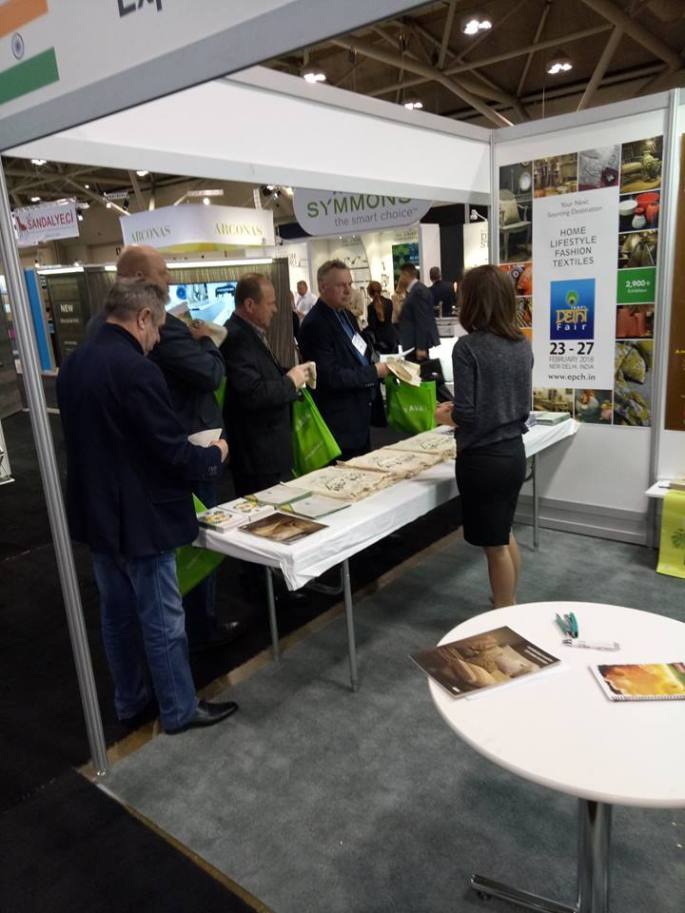Home Textiles Fair 2018: EPCH
Diversified Handcrafting strategies constitute the significance of home Textiles merchandise India
India represents ‘unity in variety’ thru its tradition, customs panorama, language or regional beliefs. This subcontinent even represents unification via artisanship. Each regional art in India tells a different tale about the humans dwelling in that area. It narrates a story approximately their livelihood, ideals and desires. The handcrafted products of India constitute the traditions of various areas and this truth will increase the significance of domestic textiles merchandise India. The handmade fabric objects are used to manufacture decorative add-ons or attires. Those objects are available via Indian providers of handicrafts at alternate gala’s.
The handcrafted products of India constitute the traditions of various areas and this truth will increase the significance of domestic textiles merchandise India. The handmade fabric objects are used to manufacture decorative add-ons or attires. Those objects are available via Indian providers of handicrafts at alternate gala’s.
 The handcrafted products of India constitute the traditions of various areas and this truth will increase the significance of domestic textiles merchandise India. The handmade fabric objects are used to manufacture decorative add-ons or attires. Those objects are available via Indian providers of handicrafts at alternate gala’s.
The handcrafted products of India constitute the traditions of various areas and this truth will increase the significance of domestic textiles merchandise India. The handmade fabric objects are used to manufacture decorative add-ons or attires. Those objects are available via Indian providers of handicrafts at alternate gala’s.
Tie & Dye fabric
The ‘tie-and-dye’ technique is used to manufacture a spread of domestic textiles merchandise India. those merchandise appearance vibrant with wealthy colors. They use combination of geometric motifs and nature-stimulated patterns. The craftsmen and craftswomen of Rajasthan and Gujarat are the creators of tie-and-dye fabrics. Those artisans use this crafting method to create exclusive types of clothing, curtains, fixtures covers and wall-hangings. The Gharchola saris from Gujarat and the Lahriya/Mothra saris from Rajasthan represent the richness of tie-and-dye technique. The same strategies are used to make interesting domestic fixtures available via Indian wholesalers of handicrafts at various exchange fares or autumn fares.

Hand-Painted/Hand-revealed textile
The artisans from unique regions of India use block-printing to create fashion designer residence furnishing objects and garb. They use steel or timber blocks to create dynamic motifs at the background of subdued or vibrant sunglasses. a few craftsmen use linoleum blocks to print the cloth with dynamic designs. The residence furnishings with Sanganer prints have white background. then again, the artisans use purple/black colored fabric for the Bagru prints. The artists of Ahmedabad, Farukhabad and Pethapur use complicated designs and flamboyant backgrounds to make winsome furnishing objects. With distinct printing strategies, Indian handicrafts producers deliver range into the looks and feels of various domestic textiles.
Batik printed Textiles
This face up to printing approach is over thousand years vintage which makes use of molten wax and bloodless dyes to create ethnic designs. The batik printing is used to print the cotton/semi-cotton fabric. The artisans from Shantiniketan of West Bengal and Chola Mangal of Madras are well-known for batik printing. They use splash approach or screen-printing technique to narrate many tales through the broadcast furnishing objects. The craftsmen of South India use unique pens to hand-paint winsome motifs on colorful backgrounds. This Batik technique is known as Kalamkari.

the fall or alternate truthful in India brings a various series of handmade Indian domestic textiles from one of a kind regions to depict India’s cultural richness to the worldwide customers.
Plan your visit to IHGF Delhi Fair-Spring 2018, know more about this mega event at: http://ihgfspringfair.epch.in/
Comments
Post a Comment